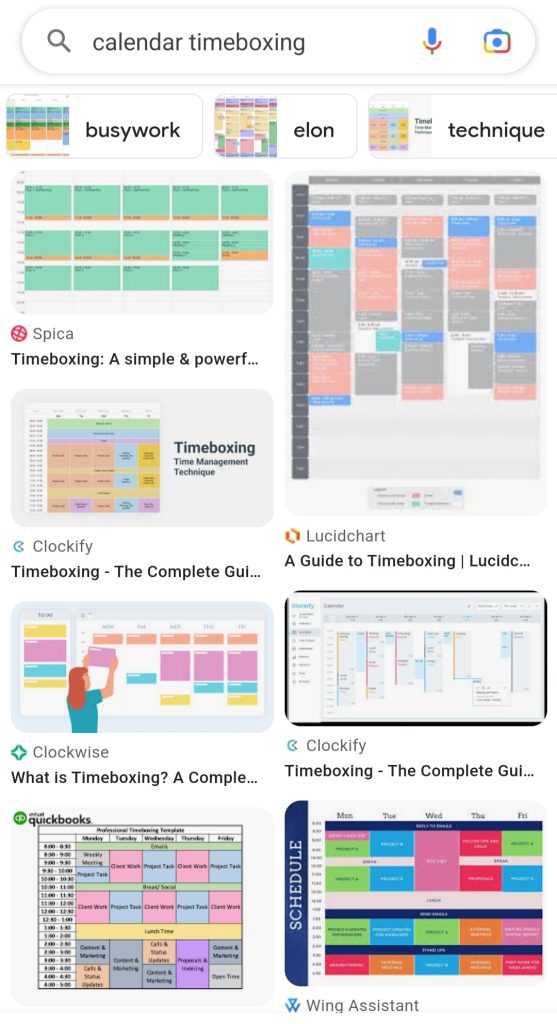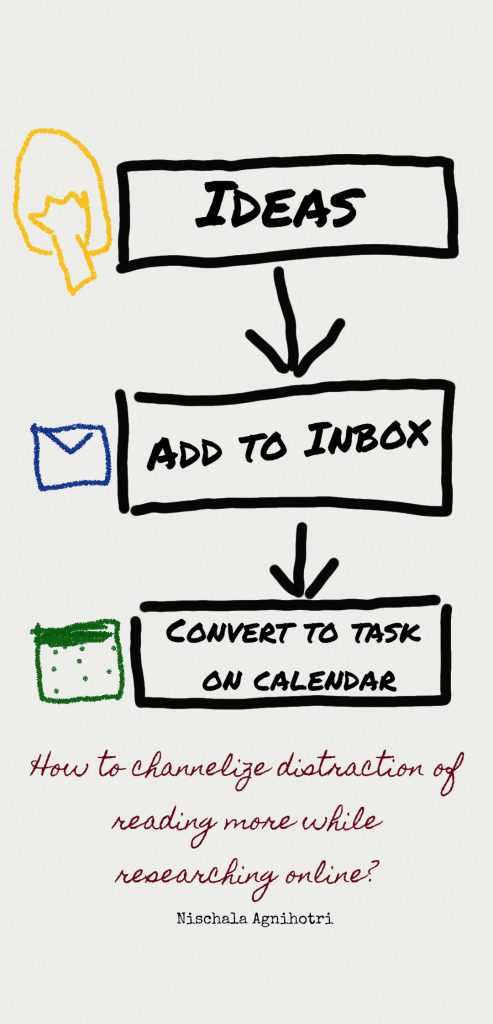When was the last time your to-dos list failed you from checkboxing every item on it. Probably today or yesterday? And, each instance when you gather your willpower to keep up with a consistent writing schedule, you fall flat after a specific number of trials. Failing to keep up with a consistent writing schedule and regime is not because you are not determined enough. It is because your system is failing you. The method that you have chosen is not able to create a rhythm for you.
To-do Lists and Calendars don’t work!
To -do lists do not let you deliver results consistently and predictably. And, neither do calendars! They are designed to fail you because you can give excuses to skip them and also end up choosing the wrong task.
During seven years of my freelancing career, I figured out pure to-do lists and meeting blocks into the calendar don’t help me achieve my goals and stick to a schedule. They work in silos. They need to be brought together and timeboxed. Timeboxing clarified many things to me while working solo as a freelancer. It gave me feedback on many questions such as:
- Which projects took away most of my time?
- Which clients were I investing me time for?
- What activities tool away most of my energy? Work vs Home.
- When was my flow at its peak?
- How long did I take to generate specific content assets? Blog vs Case study vs ebook, etc.
As days passed by, and my craft of freelancing got better; my rules of timeboxing also changed.
Later, a bumped into an article that referred to this method as timeboxing. I eventually learnt that this is a research-based technique developed by James Martin in a book called Rapid Application Development, Daniel Markovitz’s talks and consulting methodology includes timeboxing as a top productivity hack for agile teams, and there are many versions of it.
Some of the world’s best time managers use this method of timeboxing. I am talking about people who perceive time as a currency. Bill Gates, Mark Zuckerberg, Elon Musk, Taylor Swift, and many others adopt this method. Just before penning down my thoughts for this article I googled about timeboxing for some images are here’s how it looked like.

Most productivity tools out there in the market also recommended adopt this technique while using their tools.
Timeboxing to Schedule Your Day: How to use?
As a working mother, I always say there is a caveat.
“Set a plan the previous day and mash the most difficult task into micro-tasks that you can achieve. Add unpredictability to your agenda of the day. It is not as smooth as it seems in those self-help books. It gets really crazy, especially when your little one falls sick, your maid or nanny takes a day off by surprise, your boss or client has a sudden deadline for you and when you look at the date, it is backdated.”
As a marketer who needs to deliver productivity and a blogger about Thought Leadership, I have to keep up with many other tasks.
So here is a method that I have worked on for years and it works for me now. It puts me on auto-pilot. Some of the distractions, challenges, and fall back of scheduling comes in any of the following forms. Identify them. They look like these excuses:
- I add it to my calendar, but never stick to it.
- I have something on my calendar, but have some other task coming up at the same time.
- While researching about a task, I get distracted by deeper and deeper research, lot of tabs on my browser.
- Scheduling does not encourage my “flow state”.
- I hate some tasks and despite scheduling, when I begin it, I scoff away from it.
5 ways of dealing with excuses while implementing timeboxing
- I add it to my calendar, but never stick to it:
Solution: Add a currency to one hour. It need not be what you are earning now, it could be an imaginary number. As you complete an hour of what you scheduled, add that number to a earnings table. Each time you skip what you have already scheduled, reduce that number from the earnings table. At the end of each week, this number would motivate you to stick to the schedule. This in turn helps your visualization aura to materialize this number in reality.
2. I have something on my calendar, but have some other task coming up at the same time.
Solution: Show your calendar to the rest of the team/ organization. Let people working with you know that you are not available or what you are working to is a fundamental principle of self-directed organization. Facebook has been one of the early adopters of a flat organization and transparent calendar. It helps build productivity, trust and dependency.
3. While researching about a task, I get distracted by deeper and deeper research, lot of tabs on my browser.
Multiple iterative rounds of deliberation led me to this process. I always have the habit of sending reminders and tasks to my own email ID. Once I open them during my planning and organization slot, I end up assigning them on different dates. This includes links that I want to read, videos that I want to watch or models that I want to implement and experiment, and so on. Then, it is added to my calendar as a task for not more than 30 min slot.

4. Scheduling does not encourage my “flow state”: How to use it so that you don’t lose your flow state?
Solution: This is a common worry for many. How to maintain the flow state while timeboxing? Your state of mind falls in any of these three states apart from the flow state: creative state, exuberant state and fatigue state. The flow state is high while in the creative state, and low during the fatigue state. Your brain is in a fight and flight mode while in the exuberant state of getting things done. Add your creative, complex and deep work in the creative state time on your calendar. This ensures that you are timeboxing the right tasks during the right time. There is another state which is autopilot-mode. While in this state, you do things without much consciousness and much effort. For instance, driving, brushing your teeth, etc.
5. I hate some tasks and despite scheduling, when I begin it, I scoff away from it.
Solution: No matter what some tasks never cross the love line. You despise them forever. Pay a heavy reward upon completing them. I reward myself with spa hours, gardening day, and things that I love doing. Upon completing a not so easy task each time, reward yourself with something difficult.
20-20-20 stopwatch: Timeboxing technique used to write more often
If you are determined to write more often on the road to becoming a Thought Leader, block three individual slots of 20 mins each, on your calendar.
Or, block 2 slots of 40 mins and 20 mins.
Or, a single block of 60 mins.
Rules of this framework:
- Don’t block more than 60 minutes in a day. The reason being anything more might get you into and exuberance mode that will bring fatigue and disinterest sooner.
- Club two or more slots of 20 mins only if you think they will help you deliver something by end of it.
- Ideate for 20 mins or learn something; followed by 20 mins of understanding by example or some practice time and final 20 mins of application or actual exercise
For writing more often, here is how you need to plan.
- 20 mins: Topic and outline
- 20 mins: Research, connectors and argument building
- 20 mins: Final writing and editing
This depends on your appetite for the task, your working and personality style, and the type of task.
- Add specific tasks to each slot and then perform them.
- The trick is timebox these in a way that they don’t intrude you weekends, holidays and slack.
- You can’t be high on energy every single day. So find those zones during the day and block these slots. Similarly, find those zones in a week to block these slots.
Manage finite resources: Become a Thought Leader using Timeboxing
Your Day has finite number of work hours. You also have a finite amount of energy. This compels you to choose what you need to achieve in a limited time that would let you fulfil your vision.
Explore the full course ‘Become a Thought Leader’ by filling the form here. Or, join as a member of Story Scientist to get full access to other courses, templates and workshops.
